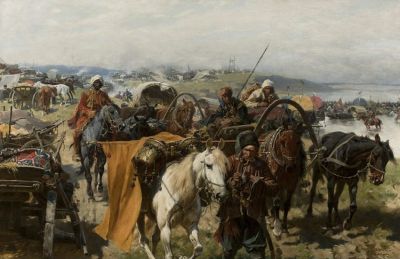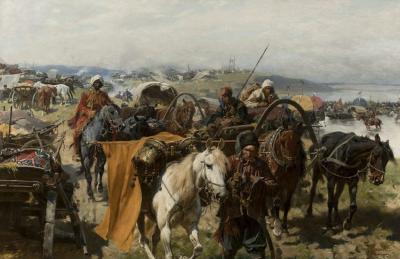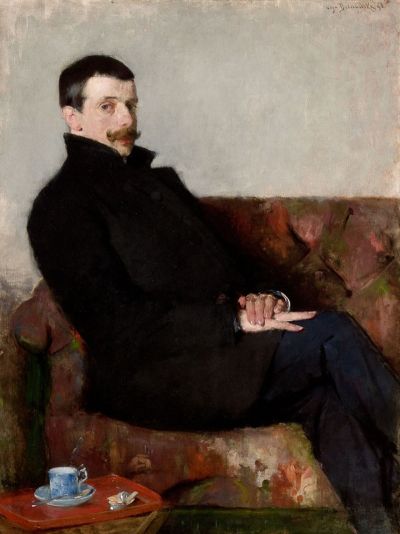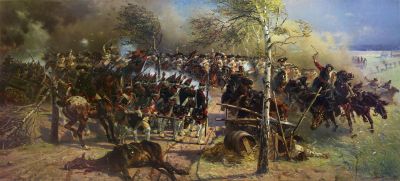Brandt, Józef

Brandt, Józef (Josef von Brandt), Polish painter, leading member of the “Munich School”. From 1863: student at the Academy of Fine Arts in Munich. 1867 he opens his own workshop in Munich, which he runs till the end of his working life. *11.2.1841 Szczebrzeszyn, †12.6.1915 Radom. After finishing school in Warsaw, in 1858 he starts a course of engineering at the École Nationale des Ponts et Chaussées in Paris, but soon turns to painting on the encouragement of the painter Juliusz Kossak (1824-1899). He takes lessons from Kossak, Léon Cogniet (1794-1880) and Henryk Rodakowski (1823-1894). In 1860 he travels with Kossak throughout the eastern area of Poland. In 1863 he goes to study in Munich; initial painting studies in the workshop of Alexander Strähuber (1814-1882). On the 17.2.1863 he enrols in the antiquity class at the Royal Academy of Fine Arts in Munich, studies under Carl Theodor (Karl) von Piloty (1826-1886), but above all in the private workshop of Franz Adam (1815-1886) and in a course in water colours held by Theodor Horschelt (1829-1871). He spends the summer months in Orońsko where he opens a highly popular workshop in 1866. Around 1875 he runs an unofficial painting school in his Munich workshop, where he mostly teaches young Polish painters. The workshop will become the centre of the so-called “Poland Colony” in the “Munich School”. In 1877 he marries Helena von Woyciechowski Pruszaków, the owner of the Orońsko estate. Henceforth he and his artist colleagues organise a painting academy on the estate during the summer months. In 1878 he is made an honorary professor at the Munich Art Academy. Awards: 1869 gold medal, Munich; 1893 Order of Isabel la Católica, Spain; 1898 Bavarian Maximilian Order; 1900 honorary member of the Academy of Fine Arts in Prague. His works can be found in the national museums in Cracow, Posen/Poznań and Warsaw, and in almost all the major Polish museums, in the Braith-Mali-Museum in Biberach, in the Gemäldegalerie Neue Meister in Dresden, in the Museum of Fine Arts in Leipzig, in the Bavarian State Painting Collections and the Städtischen Galerie im Lenbachhaus in Munich. Brandt is a master of oil painting, a technique that he learnt from the battle and horse painter, Franz Adam. His exuberant imagination, dramatic compositions and rich use of colours can be seen in his paintings of events in the 17th century Cossack Wars and Tartar invasions, the Ottoman-Polish War (1620/21), the invasion of Sweden (1674/75), the Battle of Kahlenberg (1683) and many more. He uses literary and historic sources as an inspiration: for example the historical writings of Wojciech Dembołęcki (ca. 1585-1645/47), the diaries of Jan Chryzostom Pasek (1636-1701) and Romantic Poetry written by Joseph Bohdan Zaleski (1802-1886). He paints historical robes, musical instruments, weapons, horse trappings and saddle cloths with great precision, modelling them on the objects collected in his own workshop. In this way he manages to mediate the picturesque and exotic qualities of the relevant eras. He lays particular value on the simultaneously naturalistic and dramatic portrayal of horses and their colourful riders. In addition he paints genre and hunting scenes, stables and markets, landscapes from the area around Orońsko, portraits, horses and costume pictures.



